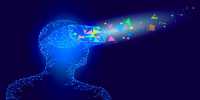The Van Ike Brothers ’Ghent Altarpiece (1432) is considered to be the most famous painting in history. Nearly six centuries later, a team of researchers is now using artificial intelligence (AI) to reveal some of the ‘most protected secrets of artwork’. The team successfully deconstructed mixed X-ray images of the masterpiece and released new details about the two-sided Adam and Eve panels in this poly pitch painting. The Ghent Altarpiece consists of 12 highly detailed painted panels, of which eight are painted on either side of the three-piece folding construction. Images of Adam and Eve enhance the open view of the altar; these two bipartisan panels are the subject of examination in this study.
The search is expected to improve our understanding of industry masterpieces and provide new opportunities for industry research, preservation, and presentation. Researchers at the National Gallery, Duke University, and UCL worked on a large and intricate 15th-century altar at St. Barre’s Cathedral, Belgium, with technical images obtained from Van Ike’s brother Ghent Altarpiece. ‘Artificial Intelligence for Art Investigation: Meeting the Challenge of Separating X-Ray Images from Ghent Altarpiece’ shows how educators used a new augmented algorithm to study mixed X-ray images featuring front and back images of two-sided science panels, Deconstructed in a clear image. These images are a comprehensive set of high-resolution images obtained by the Royal Institute for Cultural Heritage (KIK-IRPA) using various imaging techniques as part of the ongoing preservation of Bedipis, providing plenty of data for interrogation and interpretation.
Lead Academic Dr. Miguel Rodriguez (UCL Electronic and Electrical Engineering) commented, “This approach demonstrates that artificial intelligence-driven strategies driven by deep learning can potentially be used to address challenges arising in industrial research,” Lead Academic Dr. Miguel Rodriguez (UCL Electronic and Electronic Engineering). He added We want to see how the development of a similar AI-oriented approach will affect the ability to reveal other hidden features in any images, such as previously hidden designs." X-ray images are a valuable tool for examining and retrieving paintings because they help establish the condition of a part and provide insight into an artist’s technique. But the penetrating nature of the X-ray means that everything in its path will contribute to the image of the result, which is informative but can produce images that are difficult to explain. This is especially true for painted panels on both sides, and where an artist has used the canvas again.
The new algorithm that separates complex X-ray images enables art historians, conservationists, and heritage historians to better understand Old Master images and can assist experts in protecting and recovering fragments of published information. Helen Dubois, head of the Royal Institute for Cultural Heritage’s (KIK-IRPA) Zhent Altarpiece Conservation Project, said: X-ray image processing will provide a very useful tool for decrypting complex technical images. Paint layers can be diagnosed with more precision. Maybe one day, with some help from AI, my stick-person will become a recognized person above all else.
















